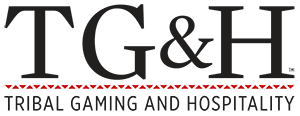If you can’t measure it, you can’t improve it
So far in this series, we’ve covered SERVICE, LABOR, and MENU & FOOD PRESENTATION in improving your food and beverage operation.
Proper COSTING and WASTE control are the next processes, following MENU Analysis and FOOD PRESENTATION. Peter Drucker, Management Guru and author, often said, “If you can’t measure it, you can’t improve it.” In the Food and Beverage business, if some basic measurements are not tracked, then we follow Einstein’s definition of insanity, “…Doing the same thing over and over again, but expecting different results.”
Here are some key measurements essential to F&B success:
-
- Food Cost per Plate. This is the cost of each item that is offered on a single plate or included in a single menu price. Every ingredient used in the preparation, including the cost of condiments as an allowance, spices, and extras such as the soup or salad included in the menu price. This is also known as Food Cost Potential.
- Food Cost per Pan. This is typically required in a buffet or catered area, as portions vary by guest. This is important when measuring the value of food in production and on-floor. Waste is also measured by this method.
- Food Cost (of Goods Sold) per Inventory. Cost is computed by an accurate opening inventory, plus purchases in the month, minus the closing inventory, compared to the sales for the month. Without a proper inventory that is designated per outlet, this is nearly impossible to measure.
- Beverage Cost per Drink. This is a cost potential, derived by recipe per drink as compared to sale price.
- Beverage Cost. This is measured like food cost above, opening inventory of Beer, Wine and Liquor, plus new purchases for the month, minus closing inventory – compared to the sales per month for each revenue item.
- Revenue per Seat. This is a fun measurement that focuses on labor efficiency and upselling. Take the number of seats per outlet and divide the total revenue per day for a minimum of thirty days. Increased complexity can be done by adding in turns per shift or by adding in server information for upselling and sales goals.
Once you have these statistics and can observe trends for an ample period of time, you can determine which areas need correcting. There are not industry absolutes in these metrics. Management will need to understand what goals are desired for each. Too low of a cost percentage might jeopardize loyalty of your guests. Too high of a cost and you might be in jeopardy of losing your shorts. Understand these metrics and you can decide where you need to fall within each outlet.
Outside of these standard measurements, it is important that you track the following as well:
- Waste Logs. As you spill or “waste” an item due to spoilage or error, accurate logs will effectively reduce your cost in that area so that you have an accurate measurement. It is also important as a management tool to effectively know if you have unnecessary waste or theft.
- Refrigeration Logs. Teaches discipline and prevents the absolutely unnecessary waste of an entire cooler.
- Transfer Logs. This is required to keep accurate food and beverage costing per outlet.
With each of these tools, measurement and consistent review by management are the only ways that they are effective for control. Having an accurate inventory per outlet, recipes, transfer logs and waste sheets all contribute to an accurate costing that can be trusted and ultimately used to make effective business decisions in Food and Beverage.


